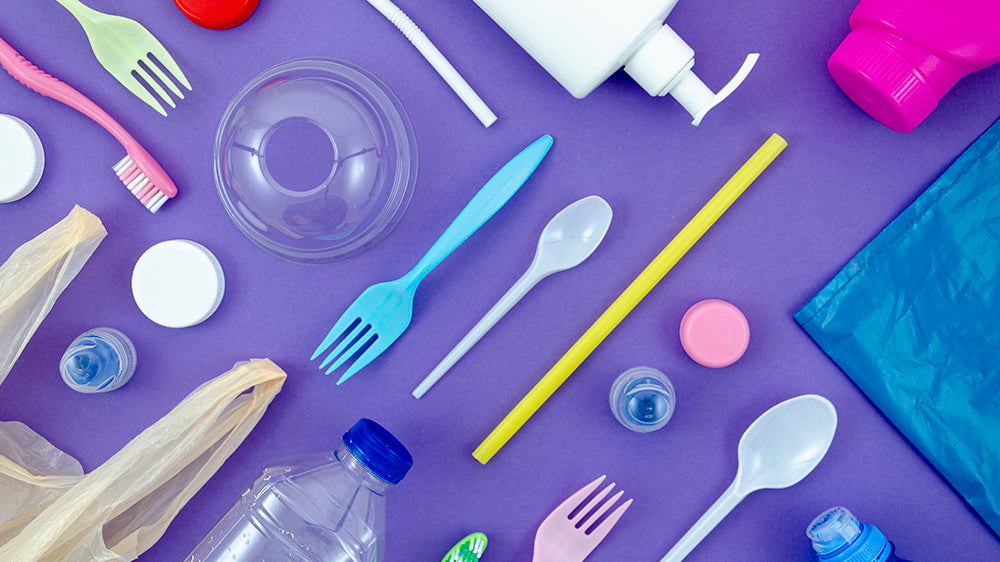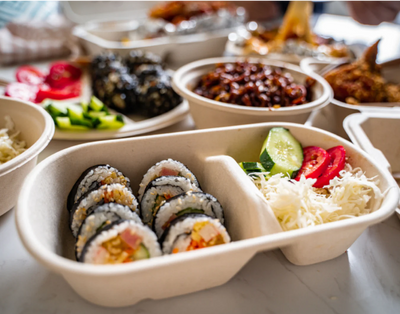Plastic is a widely used material in various applications due to its flexibility, affordability, and ease of manufacturing. However, the overuse and uncontrolled use of plastic have created many environmental and health issues. To prevent and minimize the negative consequences of plastic use, people have gradually shifted towards choosing alternative materials. In this article, EQUO will introduce some representative alternative materials to plastic along with specific, innovative applications. Surely, you will find suitable products on the journey to reduce plastic waste.
1. Ceramic
These materials are not unfamiliar to each of us. In an era where plastic is becoming a major concern for pollution and health, ceramics have emerged as a practical choice to minimize the negative impact of plastic on the environment. Ceramics stand out with their heat resistance, lack of harmful substances, and recyclability. Therefore, these two materials are often used to create household items such as bowls, plates, teapots, etc. Using ceramic items helps protect health while increasing economic value due to the inherent durability of the products.

Plastic may receive more favor in various aspects of daily life. However, in terms of aesthetics and art, plastic cannot compare to ceramics. The diversity in color and shape of ceramics makes them a great source of inspiration for artists and designers. From bowls and plates to decorative art pieces such as paintings, vases and ceramics have proven their flexibility in various fields and high aesthetic sophistication. Especially, these display products are not only beautiful but also environmentally friendly. It can be said that ceramics deserve to be an excellent substitute for plastic, an icon of sophistication and creativity in daily life.
2. Glass
If the journey to find plastic alternatives is a competition, then glass will be the heavyweight competitor of ceramics.

As durable and safe as ceramics, you can see the presence of glass in beautiful decorative vases to everyday food containers. Glass, with its transparency and brilliance, not only highlights the product but also keeps food and drinks safe, ensuring freshness. The heat resistance and moisture resistance of glass make it an ideal companion in food preservation.
Besides, glass is also often used in the production of decorative lights, mirrors, and many other art products.
The unique characteristics and advantages of glass have been and are changing the way we perceive the use of materials in our daily lives. We must acknowledge the high recyclability of glass, which will help reduce waste and contribute to efforts to build a more sustainable living environment.
3. Stainless Steel
What reason do you have not to give up the habit of using plastic? Perhaps, you still hesitate that products made of ceramics or glass will break easily? In that case, stainless steel is an excellent solution for you.
Stainless steel is mainly used in the production of household items, decorations, and various industrial products. Its most prominent feature is corrosion resistance, helping products maintain their beauty and freshness over time. The diversity in design and style makes stainless steel products suitable for many spaces and styles.

Not only is it a durable and sturdy material, but stainless steel is also often used in medical and food products due to its safety and hygiene. All these factors make stainless steel an ideal choice for those seeking safe and sustainable materials.
>> Read More:
- The Best Eco-Friendly Alternatives To Plastic That Makes Your Life Greener
- 10 Ways To Reduce Plastic Waste At Home
- 6 Best Eco-Friendly Packaging Materials For Your Business
- 7 Best Eco-Friendly Organic Straws Made From Natural Materials
- Single-Use Plastic Ban: Everything You Need To Know
4. Plant-Based Materials
With advanced technology, plastic also has the potential to disappear completely from the consumer map due to the emergence of plant-based materials. Let's review some prominent names with EQUO:
4.1. Wood
This is the number-one choice for replacing plastic in furniture and construction. Wood is used in the construction of buildings such as houses, bridges, and other public structures due to its mechanical properties and good load-bearing capacity. Wooden products are used to make furniture such as tables, chairs, cabinets, and beds, creating a warm space and creative designs. Along with the fact that wood is considered a sustainable material, people can trust to use it and reduce our dependence on plastic products.

4.2. Bagasse
Although not as durable or aesthetically pleasing as wood, bagasse is still used as a plastic alternative. Its most common application is in single-use products such as plates, spoons, and straws. Surprisingly, bagasse is also used to produce boards and wall coverings in the construction and interior decoration industries.- Regarding the sugarcane straws, these are EQUO's environmentally friendly products made from 100% sugarcane bagasse, which can completely decompose in the natural environment. The straws have a mild sugarcane scent, but they won't impart any taste to your drinks. The sugarcane straws have a similar structure and durability to plastic straws but are environmentally friendly. For more detailed information on the product, you can refer to:
>> https://shopequo.com/products/sugarcane-straws

- For picnics and outdoor meals, which often result in a large amount of plastic waste, it doesn't have to be that way! EQUO's set of utensils (spoons, forks, knives) are made from sugarcane bagasse, offering high durability, heat resistance, good moisture resistance, sturdiness, and ease of use without ever getting soggy. These biodegradable utensils are made from sugarcane fibers and contain no plastic or harmful chemicals, making them not only great for the planet but also better for your health. For more detailed information on the product, you can refer to:
>> https://shopequo.com/products/equo-sugarcane-utensils-knives-spoons-forks-pack-of-30-10-each

4.3. Coffee Grounds
Recycled in a similar way to bagasse, coffee grounds have been molded into quality products such as cups, straws, and masks that meet both aesthetic and environmental requirements.
-
Straws: Coffee straws are an environmentally friendly alternative, completely replacing plastic straws. Sturdy and durable, they don't break when immersed in water and fully decompose in the natural environment, enriching the soil as a biodegradable fertilizer. Made from 100% natural materials, these straws are safe for human health.
>> https://shopequo.com/products/coffee-straws

-
Utensil Set: Single-use eating utensils like knives, spoons, and forks are no longer unfamiliar and are popular for their convenience. However, the substantial amount of plastic waste generated from their daily use is considerable. A utensil set made from coffee grounds is the perfect eco-friendly alternative, enhancing the taste and convenience of meals while promoting sustainability.
>> https://shopequo.com/products/equo-coffee-utensils-knives-spoons-forks-pack-of-30-10-each

4.5. Bamboo, Rattan, and Reed
In addition, bamboo, rattan, and reed can also replace plastic products. Bamboo and rattan fibers are used to make bags, backpacks, and other storage items because of their good durability and natural and interesting style. Meanwhile, reed is often applied in making decorative lights, pendant lights, and other outdoor decorations.

4.4. Loofah Fiber
Don't rush to discard mature loofahs because when dried, loofah fibers have many useful applications. Loofah fibers can replace some plastic items. For example, loofah dishwashing sponges are soft, lightweight, create a lot of foam, or loofah bath sponges with exfoliating properties, reducing wrinkles and stimulating blood circulation on the skin. All these products are easy replacements for plastic items—something that neither provides much economic value nor high efficiency like loofah fiber.

4.6. Paper
The most familiar substitute for plastic in the 21st century is paper. The most widely used product is recycled paper bags and packaging. Surprisingly, notebooks, pens, and other office supplies can be made from paper, instead of using plastic products. Whether replacing plastic in packaging or office supplies, this naturally sourced material contributes to reducing plastic consumption and promoting paper recycling.

Plastic has revolutionized the world for many centuries as a great innovation. However, we will not allow plastic to disrupt the future by letting plastic waste destroy the environment and harm health. We now have materials with the potential to replace plastic, such as wood, bagasse, loofah fiber, paper, etc. Although every material has its own drawbacks, changing the habit of using plastic is the optimal and most sustainable solution, bringing humanity closer to the desire to restore the green color of the Earth. Let's change together with EQUO starting from today!


